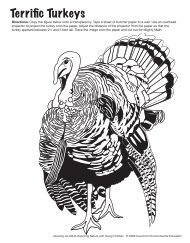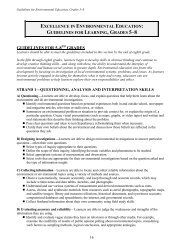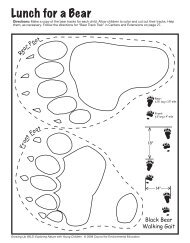Tracks! - Project Wild
Tracks! - Project Wild
Tracks! - Project Wild
Create successful ePaper yourself
Turn your PDF publications into a flip-book with our unique Google optimized e-Paper software.
<strong>Tracks</strong>!<br />
Directions: Copy the strips below onto card stock. Cut each strip into a puzzle of two or more pieces. Make the<br />
joining edges of each puzzle distinct from all others, perhaps using track shape as your guide. You may color<br />
figures and/or laminate puzzles for durability. You may include label cards for older children.<br />
Lizard Raccoon Duck Deer Beetle<br />
Growing Up WILD: Exploring Nature with Young Children © 2009 Council for Environmental Education
<strong>Tracks</strong>!<br />
Directions: Create Animal Track Stencils using the images below. Make a photocopy of each page. Cut out<br />
each set of tracks to make a separate stencil. You will likely want to cut off the text to simplify for student use.<br />
Copy each set of tracks you wish to use onto card stock. Laminate for durability, if desired.<br />
Heron<br />
Stride: 8-10”<br />
The tracks left by a walking<br />
heron follow a nearly straight<br />
line. Create this effect by<br />
stenciling a track, then flipping<br />
the stencil and stenciling the next<br />
8-10” in front of the last.<br />
Hind Foot<br />
Front Foot<br />
Squirrel<br />
Stride (or Bound): 6-30”<br />
Squirrels typically bound when on the<br />
ground with both of their hind feet landing<br />
in front of their front feet. This stencil<br />
already depicts a typical trail width. Create<br />
a longer trail of tracks by repeating the<br />
pattern.<br />
Sparrow<br />
Stride (or Hop): 2-6”<br />
Sparrows typically hop when on the ground with both feet<br />
landing at the same time, side by side. This stencil already<br />
depicts a typical stride and trail width. Create a longer set of<br />
tracks by repeating the pattern.<br />
Growing Up WILD: Exploring Nature with Young Children © 2009 Council for Environmental Education
Carefully cut out the center of each track to finish the stencils.<br />
Rabbit<br />
Stride (or Bound): 5-32”<br />
Rabbits typically bound when on the ground with their<br />
hind feet landing in front of their front feet. This stencil<br />
already depicts a typical trail width. Create a longer trail<br />
of tracks by repeating the pattern.<br />
Hind foot<br />
Front foot<br />
Dog (above right)<br />
Stride: varies with breed<br />
Trail Width: varies with breed<br />
Walking dogs and cats have<br />
similar trail patterns with tracks<br />
of back feet generally<br />
overlapping with tracks of front<br />
feet. Dog tracks are more<br />
highly variable in size and are<br />
most easily distinguished from<br />
cat tracks by the presence of<br />
claw marks.<br />
Cat (below right)<br />
Stride: 6-8”<br />
Trail Width: 2-4.75”<br />
Front foot<br />
Front foot<br />
Hind foot<br />
Opossum<br />
Stride: 6-10”<br />
Trail Width: 4-5”<br />
An opossum’s walking trail appears as a<br />
nearly single file line of tracks. (The width<br />
between outer toes should not exceed 5<br />
inches.) Create this effect by stenciling a<br />
set of tracks, then flipping the stencil and<br />
stenciling the next set 6-10” in front and<br />
slightly to the right or left of the last.<br />
Hind foot<br />
Front foot<br />
Hind foot<br />
Growing Up WILD: Exploring Nature with Young Children © 2009 Council for Environmental Education


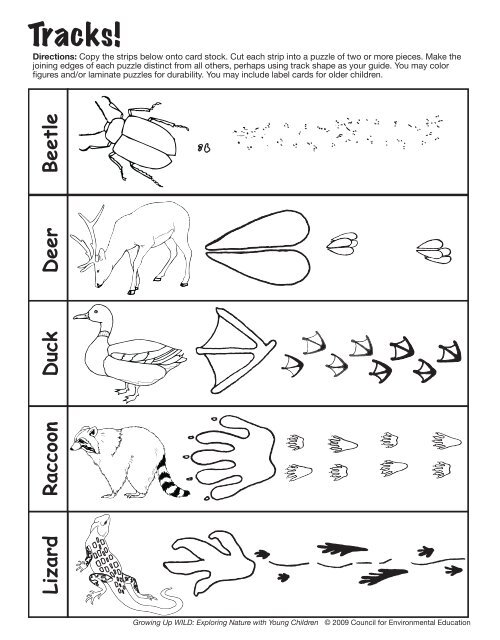
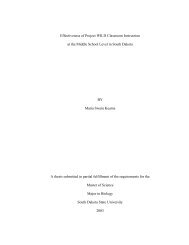
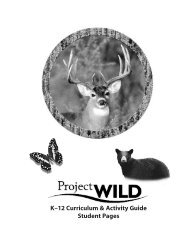
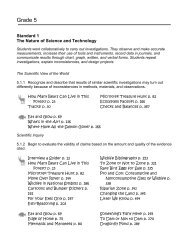
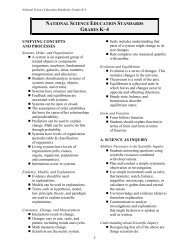
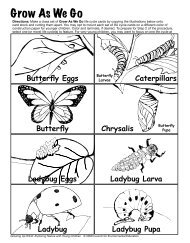
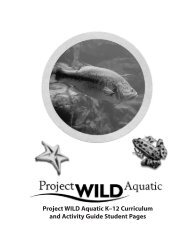
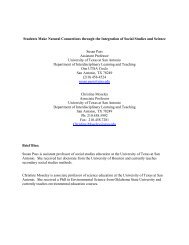
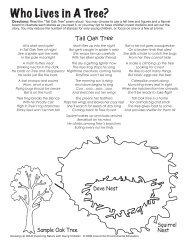
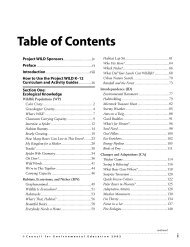
![Conceptual Framework [PDF] - Project Wild](https://img.yumpu.com/34019659/1/190x247/conceptual-framework-pdf-project-wild.jpg?quality=85)
